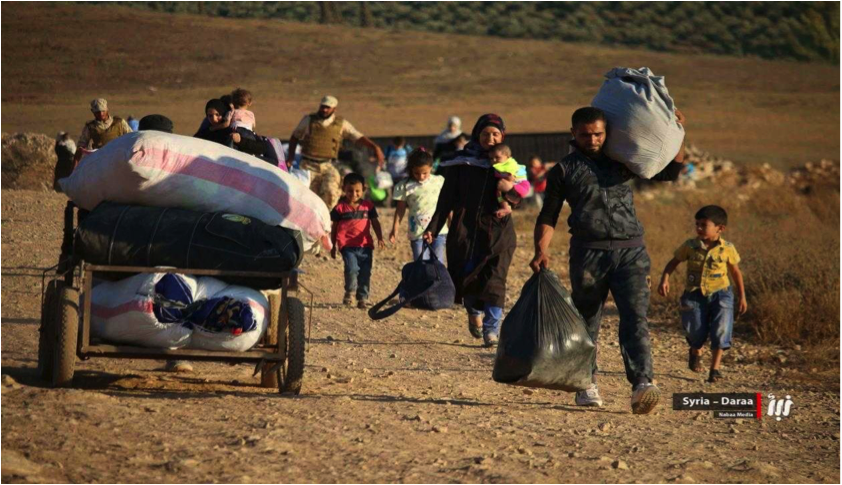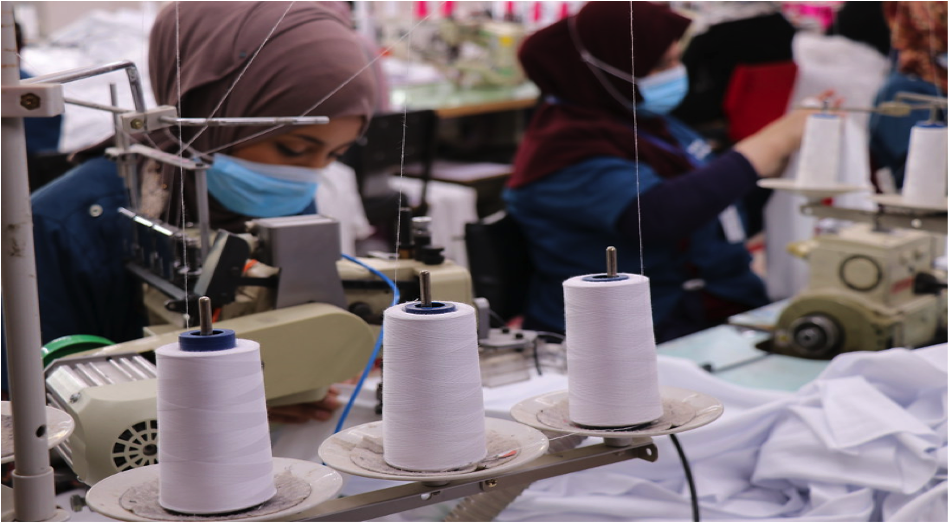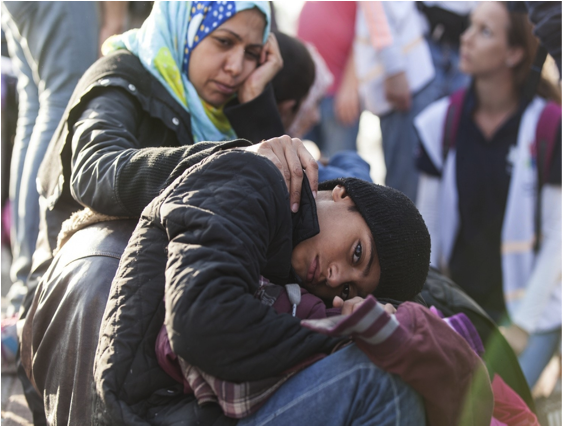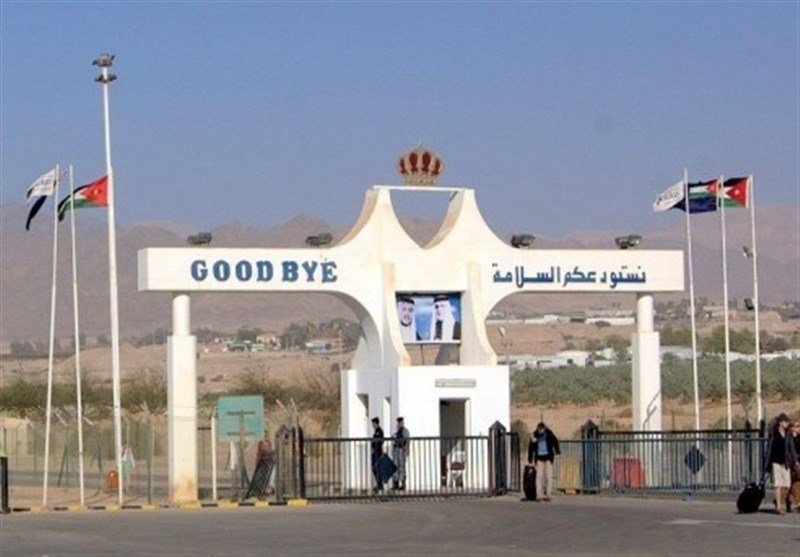Country Profile
GAPs Country Profile: Jordan / Blog Posts
The fall of Bashar al-Assad's regime on December 8, 2024, and the rise of Ahmad al-Sharaa to power created an important opportunity for refugees to return to their country, and the hopes of some Syrian refugees to fulfill. However, United Nations indicates that the number of those who returned does not exceed 65,000 out of 650,000 refugees data . Opinion polls confirmed that 72% of refugees do not consider returning under the current circumstances, which necessitates understanding the underlying reasons for this.
This piece aims to identify the real reasons that prevent Syrian refugees from returning to their country after the political system change and the emergence of a new political authority that seeks to build a "New Syria" for all segments of the politically, religiously, and ethnically conflicted society. Among the reasons highlighted are: the political and military fragility of the new regime, security threats and instability, economic difficulties, and the psychological dimensions.
From Displacement to Return: How SRAD Shaped Jordan’s Refugee Policy and Syrians’ Path Home
by: Rasha Istaiteyeh - Hashemite University
In a world where more than half of the Syrian refugees are denied the most basic means of employment, Jordan pioneered a new approach. Instead of leaving the Syrian refugees in perpetual waiting, the country undertook a carefully planned approach: to empower Syrians during their displacement so that they would one day be able to return to Syria not as victims, but as skilled and self-reliant assets. Unlike other host countries that have struggled to integrate Syrian refugees into their formal labor market (or completely omit them)-Jordan took steps in the right direction early on. Jordan provided access to work permits to the Syrians, removed the fees levied on the permits, and provided vocational training and skills development opportunities. However, it was more than a step of goodwill, it was a proactive policy crafted with a single goal in mind: to enable the person to return.
The Return of Syrian Refugees: A Journey of Hope and Destiny between Jordan and Syria
by: Atallah Al-Sarhan, Rasha Istaiteyeh | Hashemite University
The Syrian crisis, which erupted in 2011, witnessed one of the largest displacement waves in modern history, with more than 13 million Syrians forced to leave their homes under the weight of war and destruction, according to Najat Rochdi, the Deputy Special Envoy of the United Nations to Syria. In 2023 alone, the number of internally displaced persons rose to 7.2 million, while the number of refugees and forcibly displaced persons reached 6.5 million, distributed across 137 countries.
Amid these events, Jordan opened its doors to more than 1.3 million Syrians, including over 671,000 registered refugees with the United Nations High Commissioner for Refugees. Although a small percentage of these refugees live in camps, not exceeding 10%, the vast majority are distributed among Jordanian cities and towns, making Jordan one of the most refugee-hosting countries relative to its population.
What Lies Ahead Under Syria’s New Leadership for Refugees in Jordan
by: Jamal Al Shalabi, Rasha Istaiteyeh | Hashemite University
As the Jordanian government was devising strategies and policies to address the Syrian refugee crisis and repatriate nearly 1.3 million Syrian refugees, the fall of Bashar al-Assad’s regime on December 8, 2024, and the opposition’s takeover of power was a “new opportunity” to radically and completely reconsider its strategy towards Syrian refugees, especially since this crisis represents a major challenge for a small country where 31% of its population of 11 million people hold “refugee status,” most of whom are Palestinians and Syrians.
The main question is: will the transformation in Jordan's northern neighbor really contribute to the voluntary and substantial return of refugees or will the refugees hesitate between staying in their host country and returning to their homeland?
Jordan Compact Under the Microscope: Analyzing Impacts on Refugee Labor, EU Trade, and Returnees’ Decisions
by: Rasha Istaiteyeh, Hashemite University
In 2016, the Jordan Compact marked a fresh, comprehensive strategy forged between the Hashemite Kingdom of Jordan and the international community to address the Syrian refugee crisis. Jordan, shouldering a substantial burden as a host to refugees, undertakes a global public good on behalf of the international community. The repatriation of refugees hinges on political stability and individual willingness, introducing uncertainties in the post-conflict scenario.
Beyond Borders: Reflections on the Repatriation Journey
by: Rasha Istaiteyeh, Hashemite University
The global landscape has witnessed unprecedented waves of migration and displacement, with millions of individuals seeking refuge in foreign lands. While the journey to a new home is often fraught with challenges, the return to one's homeland can be equally complex. By the end of 2022, 108.4 million people were forcibly displaced worldwide as a result of persecution, conflict, violence or human rights violations. Around 6 million displaced people returned to their areas or countries of origin in 2022, including 5.7 million internally displaced people and 339,300 refugees.
Syrian Returnees from Jordan to Syria in Focus
by: Rasha Istaiteyeh, Hashemite University
Studies have found that the majority of Syrian refugees in Jordan aspire to return to Syria but their return plans are contingent on the improvement of security conditions and the availability of essential services in Syria. Syrian refugee family networks and social capital play a significant role in shaping return aspirations, with refugees who have strong family networks and social capital in Syria being more likely to aspire to return. Syrian refugee youth in Jordan also have high aspirations for the future to return to Syria. However, they are also aware of the challenges of returning to Syria, and many are considering alternative pathways, such as migration to Europe.
In 2023, the aspirations of Syrian refugees in Jordan to return home reveal an evolving landscape. The latest data reveals a shift in sentiment. A majority (of about 97%) of Syrian refugees in Jordan refuse to return within the next year. This percentage in Jordan is considered one of the highest amongst its neighboring countries . The UNHCR survey indicates that the intention to return has decreased…
Charting the Path Home: Syrian Refugee Return from Jordan to Syria
by: Rasha Istaiteyeh, Hashemite University
This blog post explores the return migration of Syrian refugees from Jordan due to the 2011 Syrian conflict, which led to a significant refugee crisis. Millions of Syrians were forced to flee from their home due to conflict, violence, and instability in their country. Jordan hosted a significant number of Syrian refugees, providing safety, shelter, and humanitarian assistance.
However, as conditions in Syria evolved, the prospect of return migration became more important. It is thus critical to investigate the complex issues underlying the return of Syrian refugees to their home country and provide long term durable solutions.
The UNHCR surveyed Syrian refugees' perceptions and intentions on returning to Syria in 2021. The 2021 UNHCR survey results suggested that most refugees do not intend to return, while 58% consider it, if…
Syrian Refugees Returning from Jordan: “The Situation in the Mirror”!
by: Rasha Istaiteyeh, Hashemite University
The global refugee crisis has resulted in forced migrations, with individuals seeking refuge across borders due to economic, political, or climatic reasons. Jordan has been a significant host country for Syrian refugees, hosting the second-highest share of refugees per capita in the world (UNHCR,2023) where the United Nations High Commissioner for Refugees (UNHCR) and other humanitarian organizations to provide assistance in various forms.
Syria remains the world’s largest displacement crisis. More than 13 million people have either fled the country or are displaced within its borders (UNHCR, 2022).
While there have been reports of Syrians returning to their homeland, primarily driven by family reunification, the numbers remain relatively small. anecdotal evidence that suggests that senior relatives go back despite an active conflict for family reunification, to identify return conditions, or to guard property against appropriation risk (The World Bank,2019).
GAPs Country Profile: Jordan / Publications
This report explores return migration governance in the African and Middle Eastern regions and the role of the EU by looking at the governance of coerced returns from Turkey, Lebanon, Jordan, and Iraq to Syria; from Morocco, Tunisia, and Libya to Nigeria; and from Iran and Turkey to Afghanistan.
This study is situated in a CONTEXT where the migration management of the African and Middle Eastern host countries under study has increasingly focused on return.
The dossier provides a detailed analysis of the factors influencing Syrian refugee returns from Jordan to Syria. While several areas of Syria, such as Damascus, Homs, and Southern Syria, have seen improvements in security, other regions continue to experience instability. There are some barriers to return: like the sustained security hazards, destroyed infrastructure, dearth of job opportunities, and persecution risk in Syria developed as formidable deterrents against returning by the refugees. Most of them have been detained, extorted, or their property is confiscated upon return. This contributes to the complex decisions made by refugees regarding their return.
Many refugees in Jordan face high living costs, limited job opportunities, and competition for resources, leading to a desire to return home. Despite efforts to issue working permits, many live below poverty, with low wages and job insecurity. Jordan bears a significant resource strain, with job, educational, and public service competition causing tensions in social relationships. Reduced international aid has further increased difficulties for Syrian refugees.












